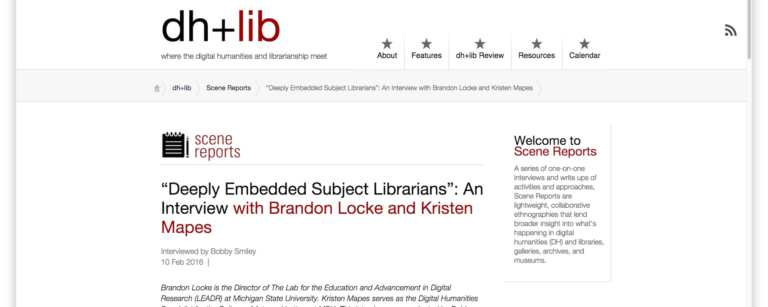One of the things I appreciate most about HASTAC is how it challenges me to think and work in new ways. I don’t think that’s to be underestimated either–too often the structures of higher education force us into habits and assumptions that reenforce the status quo rather than challenge it, to the detriment of our work and our students. HASTAC pushes against these trends, however, and provides a unique opportunity to reconsider what we do in the light of new perspectives from across the many fields of the Digital Humanities.
My presentation for HASTAC 2016 was directly related to those new perspectives, and focused on finding different ways of viewing video games. The existing paradigm of video game research largely focuses on either the communities around games or the content within them, and with the latter scholars have focused almost exclusively on close analysis of particular characters, scenes, or game mechanics. The method I proposed at HASTAC builds on ongoing work with Lev Manovich’s ImagePlot (with/advised by David Bering-Porter and Scott Schopieray), and uses distance analysis of game playthroughs to highlight similarity and difference in players’ experiences with games. Ultimately I believe this gets us to a more concrete and specific sense of interactivity in games, particularly the effects of interactivity on game narrative. If we can measure variance in game narrative (however imperfectly), then we can account for difference in player experience in more than just the abstract. I am including a link to my slides from the conference at the end of this post, in case you’re interested in seeing more.
The importance of networking at HASTAC goes without saying, and as usual HASTAC 2016 brought together brilliant scholars and teachers from institutions like the CUNY Graduate School, UNC Chapel Hill, Yale, UC Berkely, UC Santa Cruz, and many others. When I introduced myself as a Ph.D. student in English at MSU, almost without fail I was met with some variation of: “Oh Michigan State! They’re doing wonderful Digital Humanities work.” I don’t mention this to brag about MSU–though I suppose I’m doing that on some level–but rather to acknowledge the awesome work people in our DH community have done and continue to do. This included great presentations at HASTAC by Mirabeth Braude and Howard Fooksman in WRAC, and you can find more on those presentations in the other HASTAC blogs here. The DH work at MSU is being noticed, and it certainly made me feel honored to call MSU home. I hope we continue to support our DH networks, both in-house at MSU and with other institutions through HASTAC and other organizations.
